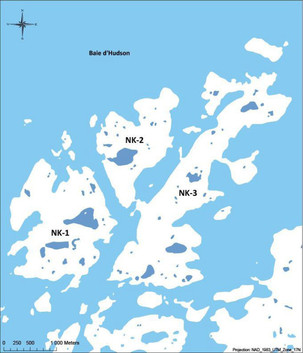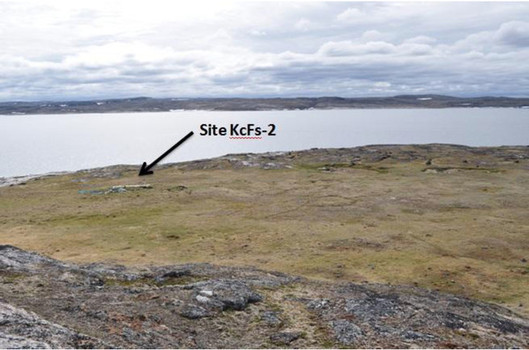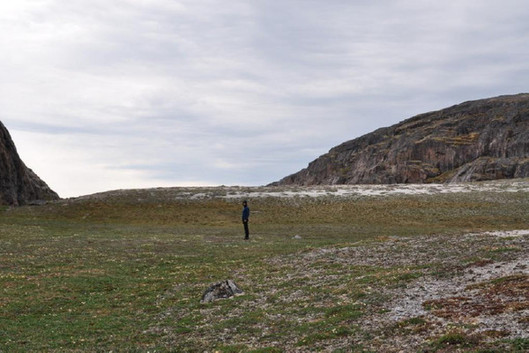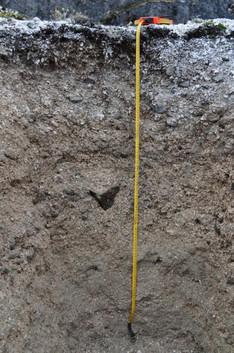Activities and broadcast
Summary of the Fieldworks of 2009, by Sarah Aubé-Michaud
In order to document the paleogeography and the past climate of the area where the Hudson Bay and Hudson Strait meet and to assess its habitability by ancient people (i.e., Paleo-eskimo and Neo-eskimo communities), a geomorphologic and a geo-archeological study of the Nuvuk Islands archipelago (Figure 1) was conducted during the summers of 2009 and 2010. The region is located three miles from Ivujivik, the northernmost village in Quebec. This study, entitled: Paleogeography and geoarcheology of the Nuvuk Islands archipelago, Ivujivik (Nunavik, Canada), is part part of a CURA project entitled "Time and space among the Inuit of Nunavik”, supervised by Avataq Institute.
During the summers of 2009 and 2010, a survey of various geomorphologic components (terraces, lakes, valleys, etc.) of the NK-1, NK-2 and NK-3 Islands of the Nuvuk archipelago was completed in order to create a geomorphologic map of the Nuvuk Islands archipelago. Each terrace (Figure 3) was identified and characterized, and shells were collected for radiocarbon dating to determine the time frame of the isostatic rebound of the islands. Five stratigraphic sections (Figure 4) were excavated, characterized and sampled in order to better understand the evolution of the KcFs-2 archaeological site.
Several samples from the KcFs-2 archaeological site were collected in metal boxes called Kubiena (cm³). Thin sections of these samples (6.5 X 9 or 6 X 10 cm) with a thickness of 63 μm were prepared for the micromorphological analysis, which is typically used to determine the evolution of archaeological sediments in response to climatic changes and anthropogenic activities.




